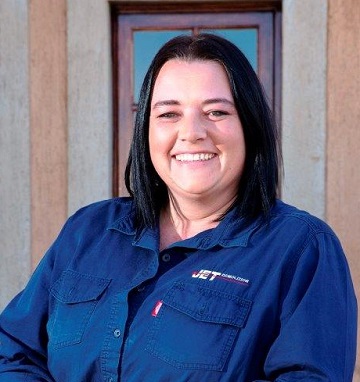Demolition is a complex and highly specialised field, ranging from the removal of a single internal wall to the large-scale decommissioning and rehabilitation of redundant industrial and mining sites. Selecting the appropriate demolition method will ensure safety, efficiency, and compliance with industry best practices.

For a high-rise structure, for example, top-down mechanical demolition and controlled implosion are both effective methods, but the most feasible route depends on the project environment. If ample space and time allow, implosion may be the preferred solution. Conversely, in confined or operational environments, high-reach mechanical demolition often presents a safer and more controlled alternative.
Kate Bester (N. Dip. Civil Engineering), Contracts Manager at Jet Demolition, says, “We assess each project carefully, considering its specific requirements, site conditions, and the client’s objectives, to determine the most appropriate solution. Our experience and resources enable us to deploy hybrid techniques, combining various demolition methods for optimal results.”
Although Jet Demolition offers a broad range of demolition services, it usually advocates mechanical demolition, due to its inherent safety benefits. This aligns with international best practice, which prioritises the separation of workers from potential hazards. To support this approach, the company maintains an extensive fleet of specialised equipment, meticulously serviced and optimised for demolition applications to ensure reliability and readiness for any project.
However, not all projects lend themselves to purely mechanical demolition. In cases where controlled toppling or conventional pre-cutting methods are required, Jet Demolition relies on its experienced full-time team to execute these projects safely and efficiently. “Demolition is a field where, as well as formal education, practical, hands-on experience is critical,” says Bester. “Our teams undergo continuous training and certification, but our real strength lies in their collective expertise and years of on-site problem solving.”
One of the particular challenges in South Africa’s demolition industry is the frequent absence of as-built drawings and structural records. In such cases, extensive planning and structural assessments are needed to determine the safest and most effective demolition approach. “We often conduct engineering assessments to understand the composition and stability of structures before selecting the most suitable demolition method,” Bester explains.
Various software tools exist to model predicted structural responses, but Jet Demolition relies primarily on its in-depth industry knowledge and practical experience to make informed decisions. Where appropriate, structural modelling is used to verify and validate the suitability of the anticipated effect.
Despite the high-risk nature of demolition, South Africa’s industry remains less regulated than is the case in many other regions, leading to a significant risk of persons or entities undertaking demolition projects without the necessary expertise. “We have recently been asked by clients to assist with emergency safe-making works in instances where general contractors attempted complex works, resulting in hugely comprised structures,” Bester notes. Clients need to conduct due diligence when selecting a demolition provider, to ensure they have the required skills, experience, and equipment to execute projects safely.
Encouragingly, Bester says there is a growing industry trend towards conducting thorough audits and assessments before awarding demolition contracts, promoting higher safety and accountability standards. In addition, global advances in demolition technology are influencing the local market positively. Although Jet Demolition can employ remote-controlled demolition equipment for specific applications – such as working in areas which are prone to sinkholes – the company prioritises direct operator control for most projects due to the critical need for real-time and appropriate responses to structural behaviour.
As well as handling execution, Jet Demolition supports clients with pre-closure planning, demolition closure assessments, and comprehensive site rehabilitation. “We assist clients in planning a property’s end-of-life activities while operations are still active, to enable a smooth transition through the process,” says Bester.
Jet Demolition’s commitment to safety, precision, and international best practices distinguishes it in the industry. “Since our founding in 1994, our priority has been to complete every project safely, on schedule, and to the highest standards,” Bester states.
For more information visit: www.jetdemolition.co.za



